Hello lovely students! Have you ever wondered what a typical British home looks like? And what the names of the rooms inside them are? Or even wondered where we park our cars in Britain? Then look no further. This ultimate guide is designed to make you a pro at naming rooms in a house.
Join me on a tour of a typical house in Britain. We don’t all live in Buckingham Palace, you know.
Are you ready to start your tour? Let’s go.
British vs American English housing words you should know

Downstairs
The hallway
This is often the first part of a house you see when entering. It separates the outside of the house from the interior. You usually put your coats and shoes here, and your umbrella too if you’re in a rainy country like the UK.
Important items include doormats, coat racks and shoe racks. Doormats are where you wipe your feet as you enter the home, coat racks are where you hang your coats, and shoe racks are where you put your shoes.
This area is also known as the foyer or entrance hall for bigger houses.
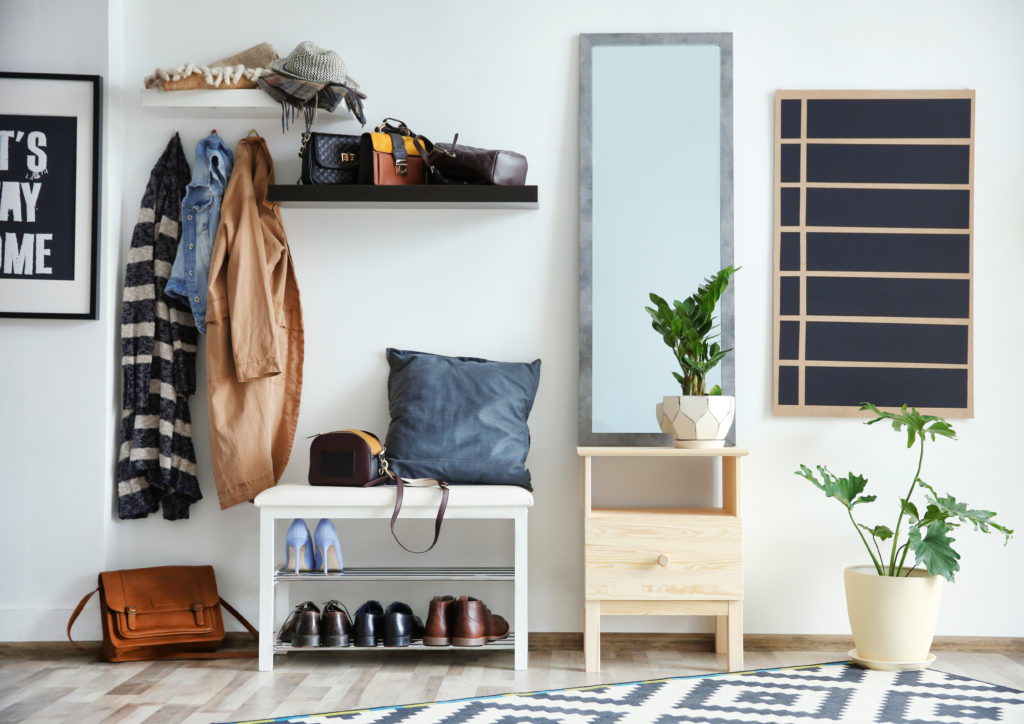
The kitchen
This food-filled room is often referred to as the ‘heart of the home’. And for good reason too. It is here that breakfast, lunch and dinner are cooked and prepared, and food is eaten. Kitchens often have a lot of furniture in them, so here are a few to remember: fridge, freezer, oven, stove, sink, microwave and cupboards.
A fridge is where you store food that needs to be chilled. In contrast, a freezer is where you store food that must be frozen like ice cream. An oven is where you bake or roast things, such as bread or chicken. A stove is usually on top of the oven and it allows you to cook food with gas and fire.
Sinks are where you get water and wash your plates after a nice meal and microwaves are electrical appliances where you heat food quickly.
Finally, cupboards are where you store plates and tins of food such as beans. If you live in a bigger house, you can store these types of foods in a small room called a pantry or larder.
Just be warned, that in the house of most British people, there is a kettle. We use it to make hot drinks, most notably tea. But you knew that already, right?
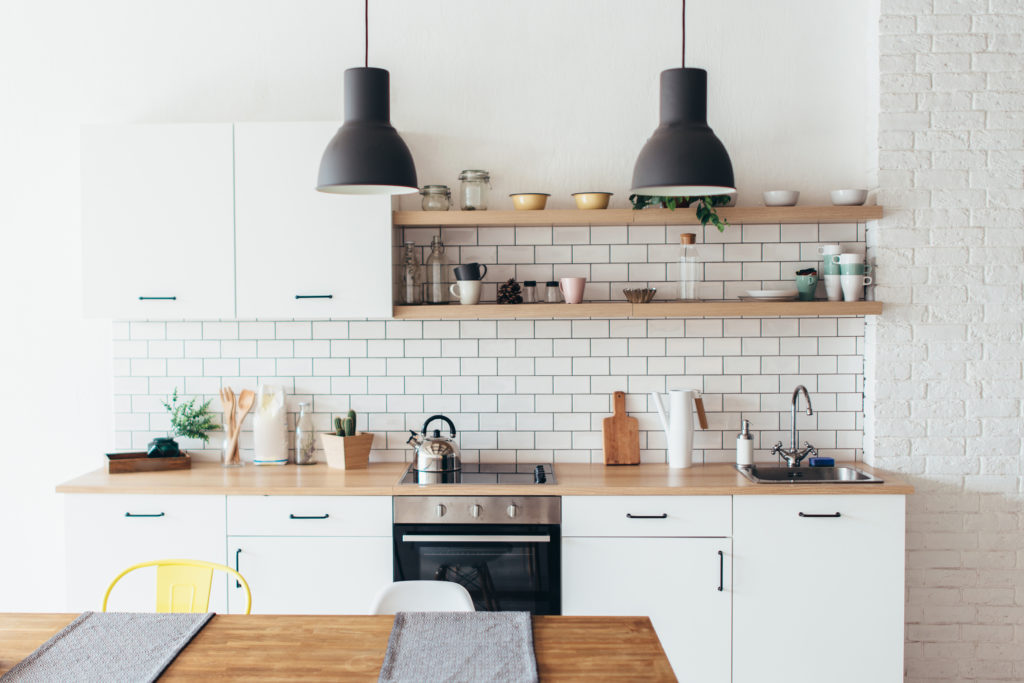
The dining room
As the name suggests, the dining room is where we eat meals, especially dinner. The key pieces of furniture here are the table and chairs (which are staples in a dining room). Please keep in mind though that not everyone has a dining room. A lot of people put their tables in the kitchen instead, opting for a more open-plan room.
If you have a bigger house, you also have a formal dining room dedicated to formal occasions, as well as a dining room for family occasions.
Do you eat in a dining room or in a kitchen?
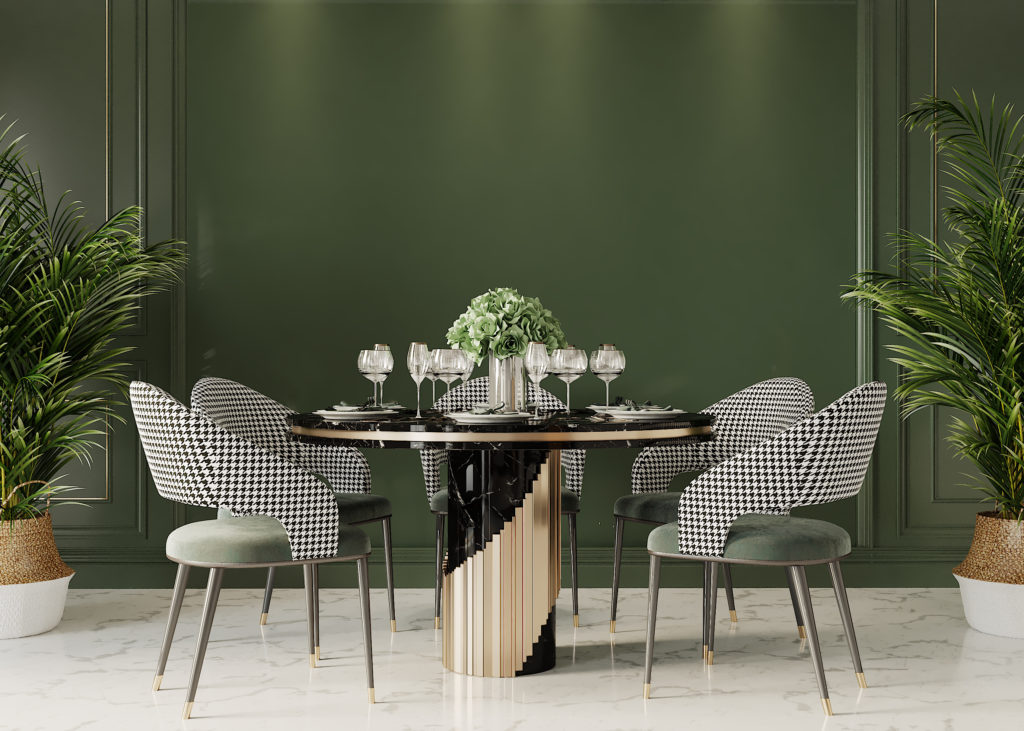
The living room
After a long day at work or studying, the living room is the first place you usually want to go to sit. Living rooms are often described as ‘cosy’ in English – that is somewhere that makes you feel comfortable and secure.
In an ordinary British house, living rooms have a television, a sofa and possibly an armchair or two. Coffee tables are also common and, if you are lucky and live in an older building, you may have a fireplace, which is perfect to use on cold, winter nights. Like most rooms in the house, there are curtains for the windows too.
This room has various names too. You can call it the lounge or the sitting room.
If you have a bigger house, you may even have two or more living rooms or sitting rooms. You might call the main living room the drawing room or formal living room, which are often found in huge homes. Here, family members entertain guests.
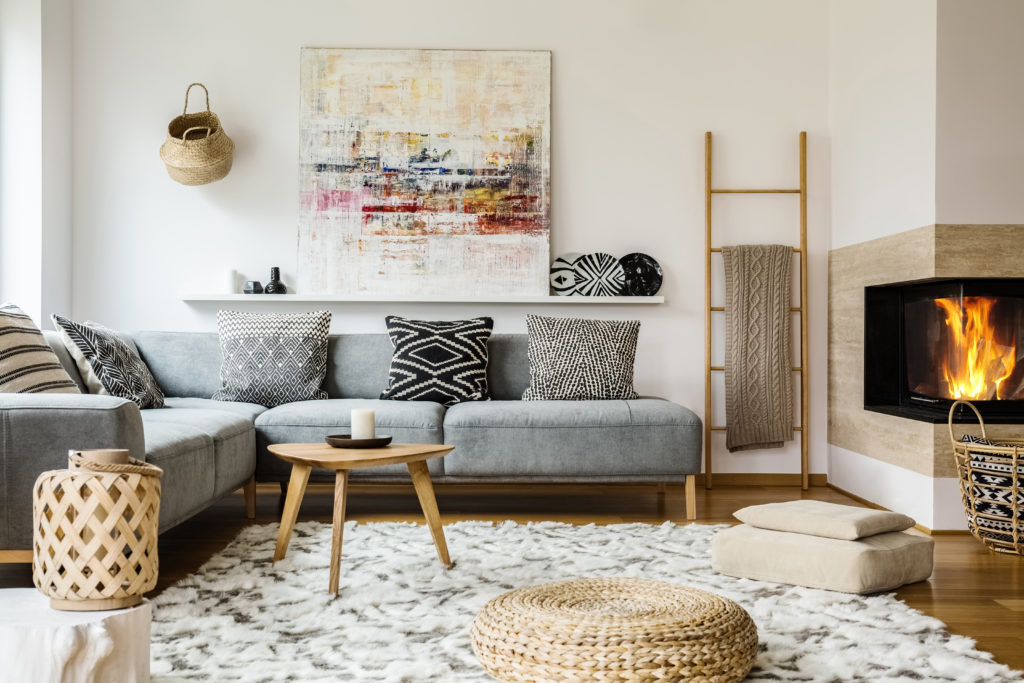
Conservatory
If you have a bigger home, you have a room called a conservatory. A conservatory is basically a room with glass walls or lots of windows rather than brick and plaster as with other rooms. They are nice to use when it is sunny and you don’t want to go outside.
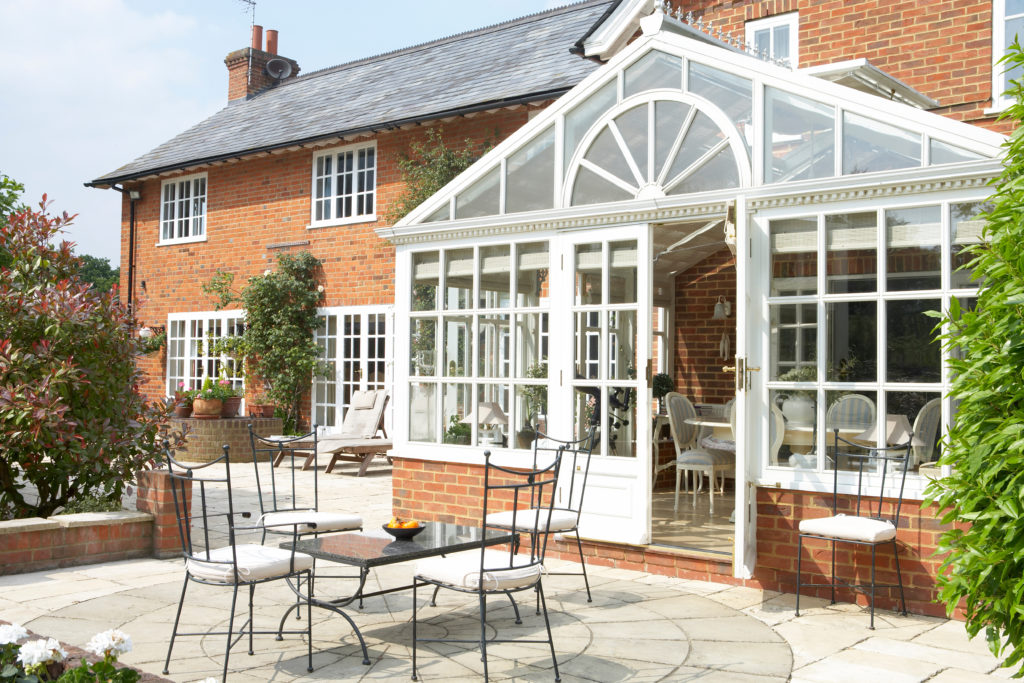
Utility room
Again, not everyone has one of these in their houses, but they do appear from time to time. In a utility room, you can wash your clothes in the washing machine and dry them in the tumble dryer.
You can also do your ironing on the ironing board. If you do not have a utility room in the UK, the washing machine is typically located in the kitchen.
It is also common to put cleaning supplies in this room. Cleaning supplies can range from vacuum cleaners (which suck up the dirt from the floor) to mops (which clean the floor using water).
It is worth noting, in America, this room is called the laundry room.
Where do you do your washing?
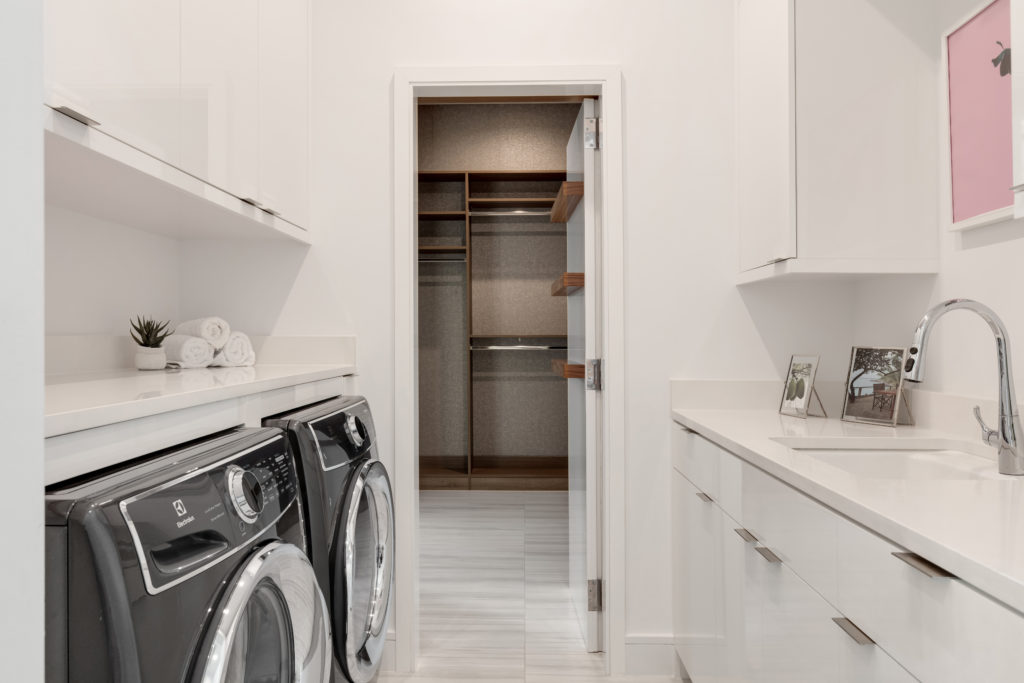
Upstairs
Now we’re going to take a look at the upstairs of a typical British home. Before you reach the stairs, you may have spotted a small door under them. No, Harry Potter does not live there! This little area is called the cupboard under the stairs.
A number of things are put here. A vacuum cleaner to clean the floor; a toolbox to fix broken items in the house; extra light bulbs for when your lamp stops working. The list is endless, and in any UK home, you go to, the cupboard under the stairs will be full of different things.
Are you ready to go up the stairs?
The landing
This is a very easy one to remember. The landing is at the top of the stairs. Think of it like this – when you reach the top of the stairs, you land on the landing. This area connects you to the other rooms upstairs.
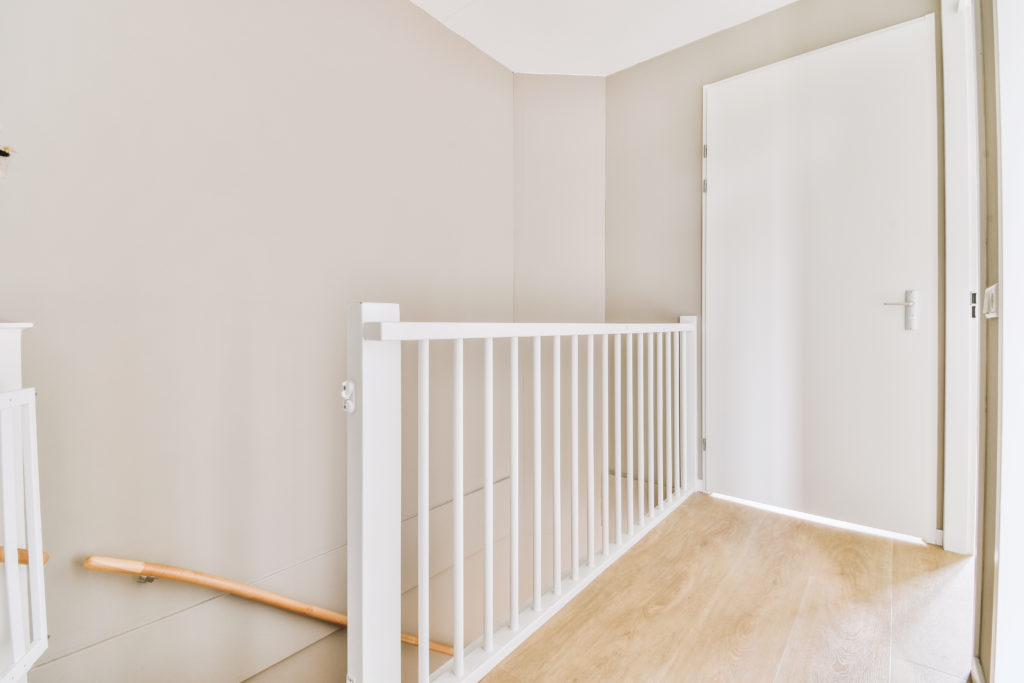
Master bedroom
The biggest bedroom in the house. The master bedroom – or the master suite if you want it to sound more luxurious – usually has a big bed such as a double, queen-sized, or even a king-sized one, which is the biggest bed you can get.
People may or may not have a television in this bedroom (this is the same for the other bedrooms).
Extras to the master bedroom include a walk-in wardrobe or an en-suite. A walk-in wardrobe is a bigger than average place to store clothes. You can walk into it like a room, which is why it is called a walk-in wardrobe. An en-suite is a bathroom attached to the master bedroom.
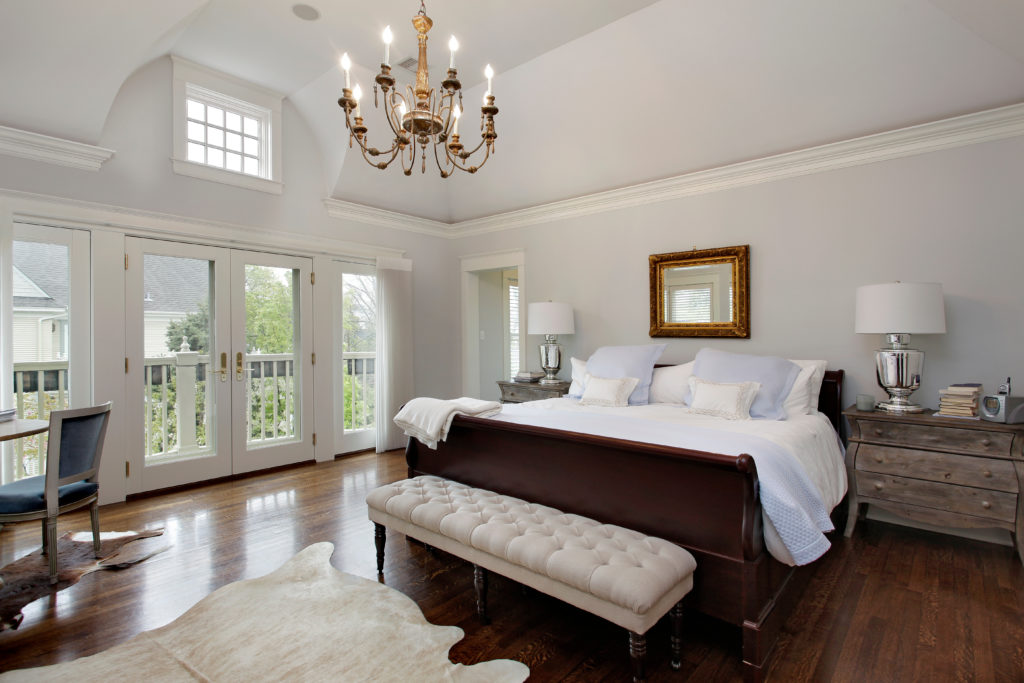
Bedrooms
There is no maximum number for bedrooms in houses in the UK, but the average tends to be three or four, including the master bedroom. A normal bedroom does not usually have an en-suite or a walk-in wardrobe like a master bedroom. Extra bedrooms are usually smaller rooms than the master suite.
However, any type of bed is common and it depends on the room size. This could be a single bed, which is for one person; a bunk bed, which is made of two single beds with a ladder joining the top and bottom beds; and of course, the double, queen, and king–sized beds, which were mentioned before.
Each room tends to come with a wardrobe to hang clothes, a chest of drawers to put clothes such as socks and jumpers in, and a bedside table, which is the small table near your bed.
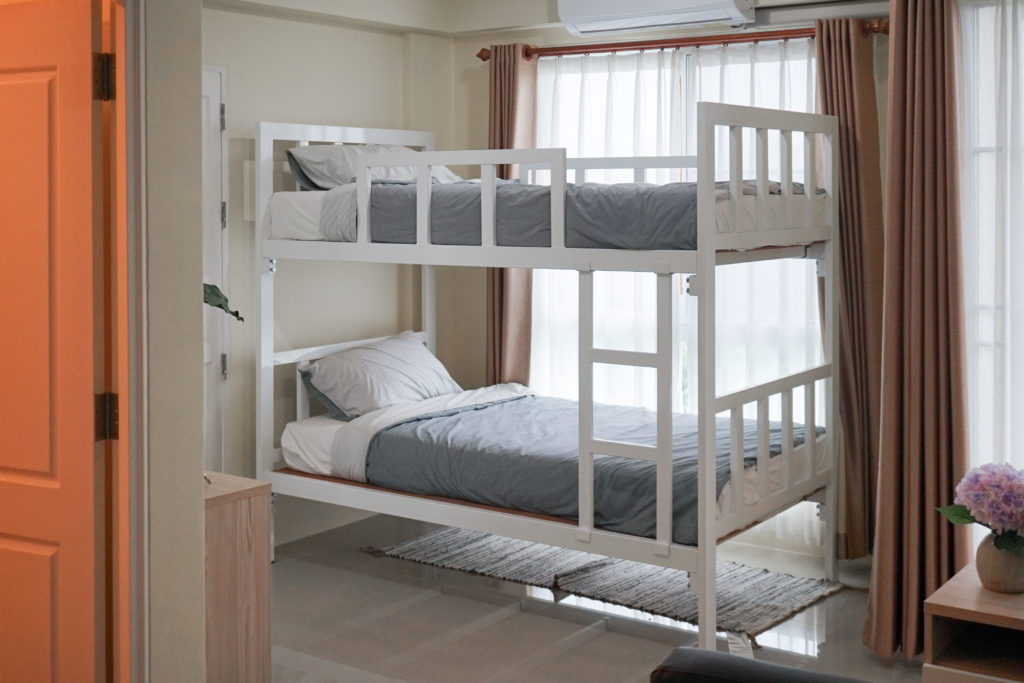
Bathroom
All UK houses have these and they can either be upstairs or downstairs. In each bathroom, you normally find a toilet, a shower, a bath and a sink to wash your hands and clean your teeth. In some houses, you may even see a bidet, which is more commonly found in European countries.
Did you know? Another name for a toilet in British English is ‘loo’.
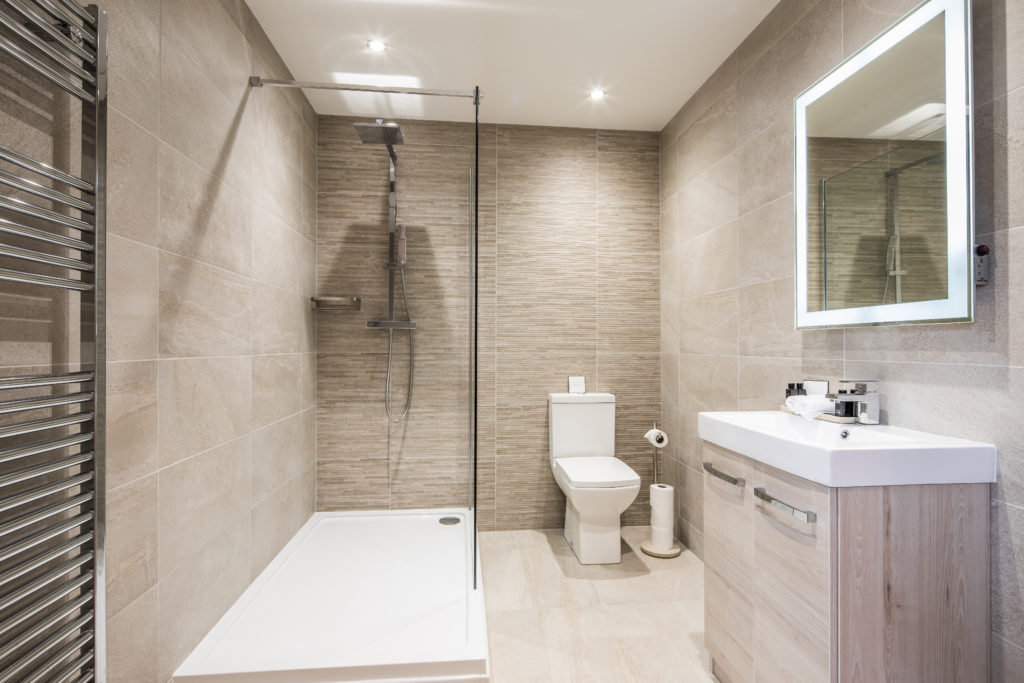
Study
If you are working from home a lot, it is usual to have a study. Here, you normally have a computer, a desk, a desk chair and of course lots of books.
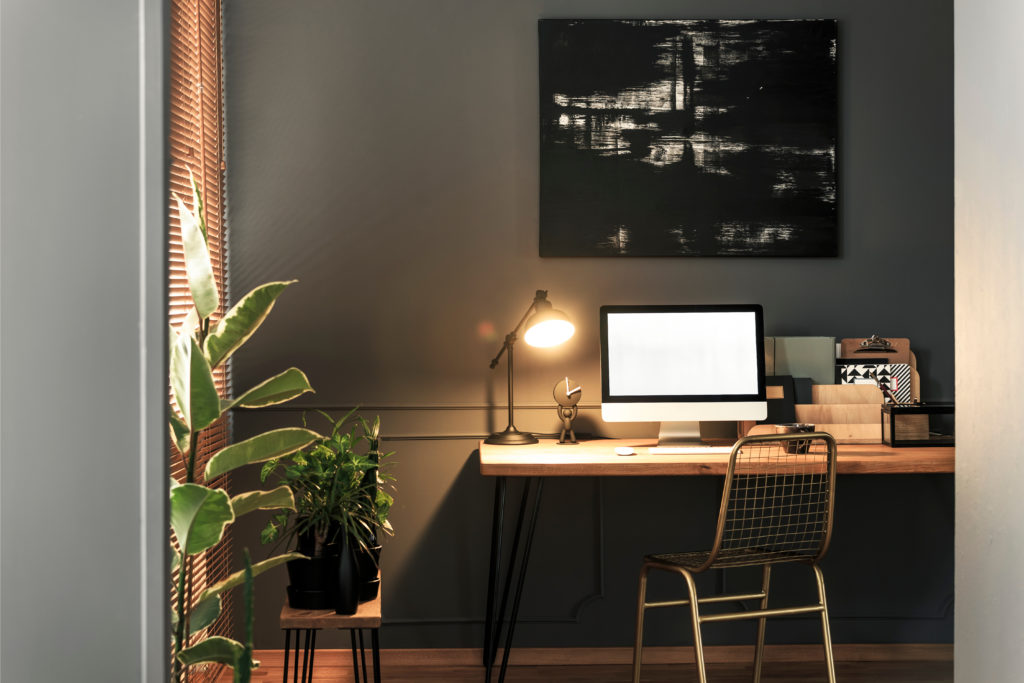
Attic
The attic is where you tend to store lots of items that are no longer needed every day. The most common things to store are memories such as old toys or clothes and Christmas decorations. This area is above the floor with the bedrooms and bathroom and is accessed by a ladder. In America, they refer to the attic as a loft.
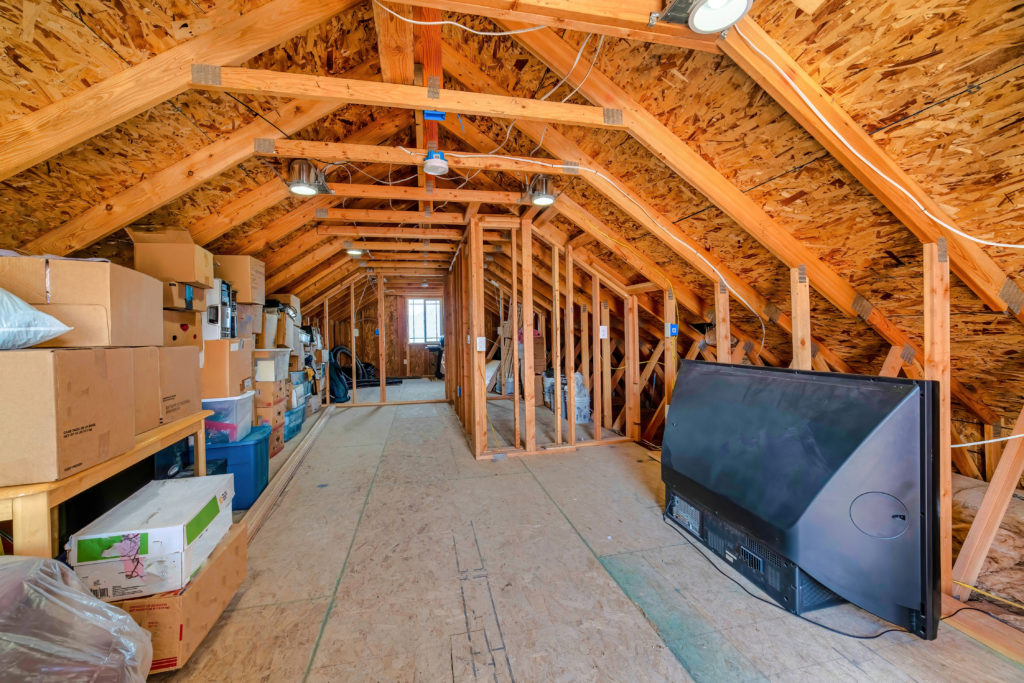
Extras in the house
Of course, every house is different and not all of them have these rooms. However, there are a few common extras you should know about.
Garage
The garage is where you park your car or motorcycle, and it is usually found at the side of the house.
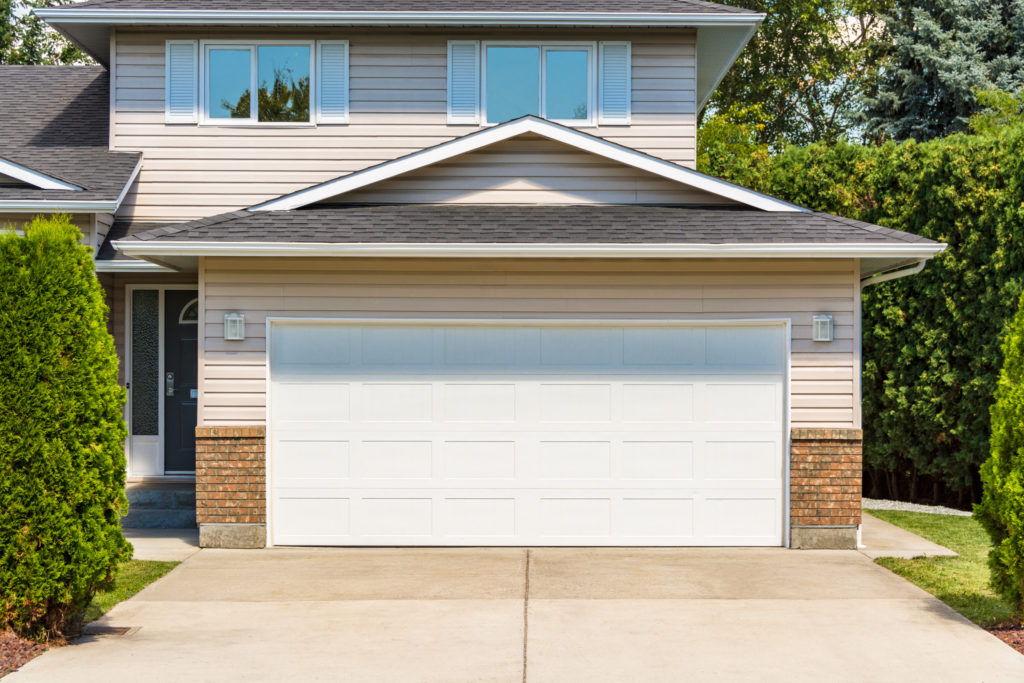
Corridors
A corridor is a passage that lets people walk from one room to another. Corridors do not tend to have their own doors.
Shed
This is less of a room and more of a building. In the back garden of a house, it is customary to find a shed. In the shed, you usually keep garden furniture and things to cut the grass such as a lawnmower.
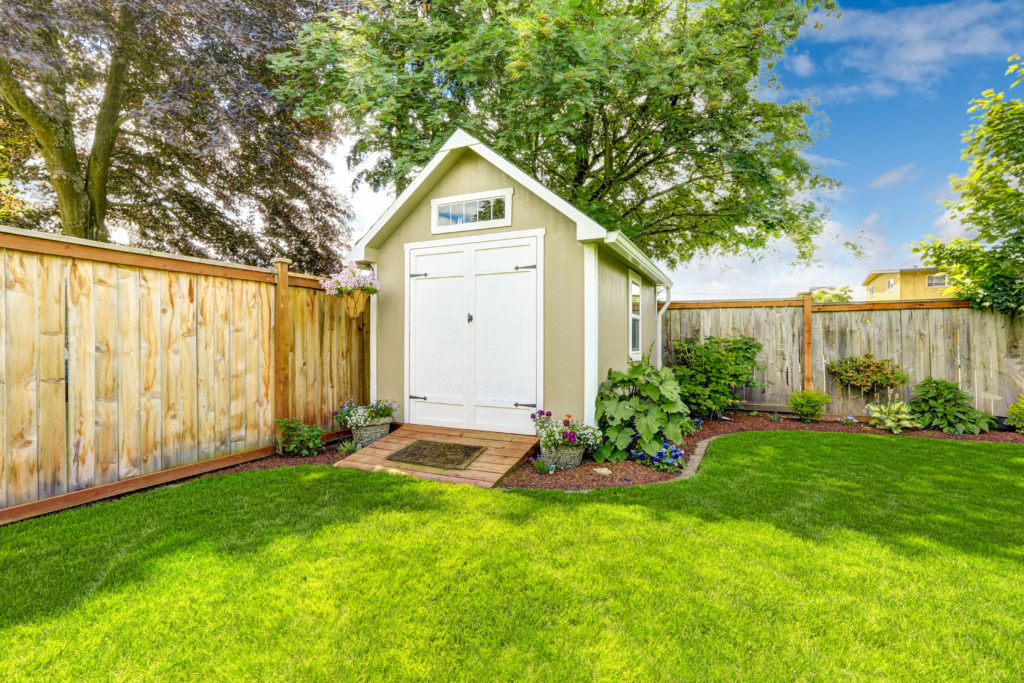
For sure there are a lot more extra rooms you can have in the house. A guest bedroom, where your guests sleep is common, as are basements, which are found under the ground floor.
If you have a huge abode and a lot of wealth you may even have a home gym or a room for a swimming pool. However, you must know that having these luxuries is a lot easier in the English countryside where there is more space. It is definitely harder to have all of these facilities in urban homes, such as in cities, as there is less land and smaller houses.

British vs American English housing words you should know
Before we go, please look at this table that explains further the differences between British English and American English rooms in a house.
| British English | American English |
| Utility room | Laundry room |
| Attic | Loft |
| Wardrobe | Closet |
| Sofa/settee | Couch |
It is also important to know that the lower floor in the UK is called the ground floor; in America, it is called the first floor.
Also, the upper floor in the UK is called the first floor; in America, it is called the second floor.
Important things to remember
Remember that every house is beautiful, so if your house does not look like this, there is no problem. In England and the rest of the UK homes vary from manor houses all the way to flats (which are called apartments in American English).
Please make sure to share what similarities and differences UK houses have to your house in the comments below and remember that all homes are special.
Is that everything?
Not at all! Watch the video below on my YouTube channel English with Lucy, for more on houses.